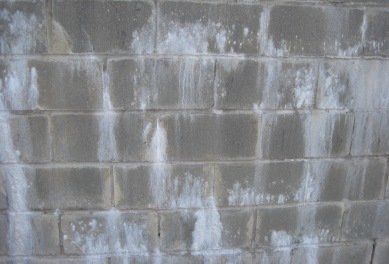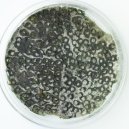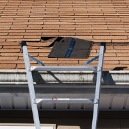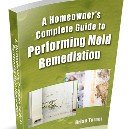Find a pre-screened local mold removal specialist Free Estimate
Find a Mold Specialist Now
Click or Call, Toll-Free 24/7
White Mold vs Efflorescence
Do you know the difference between white mold and efflorescence? People often confuse the two, but they are in fact very different substances. One is easy to clean up and one is not; one can cause serious health problems while the other does not pose any risk at all. They can look very similar, though.
Which Molds Are White?
Mold is a kind of fungus. There are hundreds of types of mold, a number of which can be white in color. Some types commonly seen in homes include penicillium (penicillium often appears bluish-green and white), aspergillus (which can also appear yellow or green), and cladosporium. In most cases, it’s not really necessary to determine exactly which type of mold is growing in your home; all types of mold can damage the structure of your home and all types of mold can cause health problems.
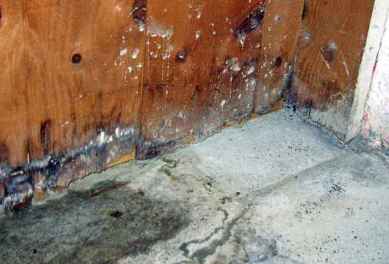 White mold on cement floor and wood wall
White mold on cement floor and wood wallWhat is Efflorescence?
It often looks like mold, but really it’s caused by salt deposits. When water seeps through concrete, brick, or stone, it can leave behind salt deposits. When the water evaporates, what remains is a white crystalline substance that resembles mold. It’s not a fungus, though, won’t grow or spread, and doesn’t cause any of the health problems that mold sometimes causes.
How Can You Tell if You Have White Mold or Efflorescence?
First, look at the type of material on which you see the white substance. If you see it on anything other than concrete or masonry, it’s mold. Second, spray the substance with a little water in a spray bottle and simply wipe it with a rag. It that removes it, it’s not mold.
If you aren’t sure if what you’ve found is mold or something else, you can always have a professional come in and test your home for mold. Here is a link to find certified mold testers near you.
What if You Have White Mold in Your Home?
If you have mold of any color in your home, you need to remove it as soon as possible. Most types of mold spread easily, so the longer you delay, the worse your mold problem is likely to become. Left unchecked, household mold can damage both your home and your health.
Mold removal is a complex process involving a number of steps.
Step One – Locate all of the mold in your home. This can be tricky since mold often grows in places where it cannot easily be seen, like inside walls. If you need help finding all of the mold, you can call in a professional mold tester.
Step Two – Seal off the work area. Cover doorways and ventilation ducts with heavy plastic and consider setting up negative pressure in the area using a shop vac.
Step Three – Wear protective gear, including gloves, hair and shoe covers, and a mask.
Step Four – Remove mold from non-porous surfaces (metal, glass, tile, etc.) with an antimicrobial cleanser (available at most home improvement stores) and a rag or scrub brush.
Step Five – Remove any porous materials that cannot be adequately cleaned (insulation, carpet, drywall, etc.) and replace them with new, mold-free materials.
Step Six – If you have mold on surfaces that cannot be adequately cleaned as described in step four but that cannot be removed and replaced, either, contact a mold remediation professional for advice. Most offer free in-home consultations, so you can get some expert advice at no charge. You can then decide whether you are equipped to do the work yourself or if you need to hire someone for the job. To find mold remediation professionals offering free in-home consultations in your area, follow the link.
Free Home Inspection By A Mold Removal Specialist
Search This Website
Recent Articles
-
See Our 5 Recommended Mold Removal Companies in Covington, KY
Apr 16, 25 12:59 PM
-
See Our 5 Recommended Mold Removal Companies in Wheaton, IL
Jun 20, 24 10:33 AM
-
See Our 5 Recommended Mold Removal Companies in Aberdeen, SD
Oct 08, 21 04:05 PM
